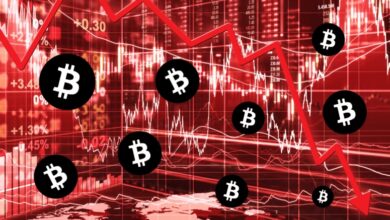US Federal Reserve’s Crypto Connection: Debt, Rates, and Controversy

The United States, often a center of global financial news, has made significant waves in the world of cryptocurrencies this week. As the US Federal Reserve announced its decision to keep interest rates steady amid rising national debt levels, the crypto community found itself embroiled in controversy and intrigue. Here’s a closer look at the key developments.
Fed’s Rates Decision and National Debt:
The US Federal Reserve’s recent decision to maintain high interest rates sent ripples through financial markets. This move aimed to address the surging national debt, which reached an astonishing $33 trillion, as reported in the Kobeissi Letter. This staggering debt accumulation has averaged $1 trillion per month and could potentially lead to annual interest expenses of $1 trillion.
While Treasury Secretary Janet Yellen appeared unfazed, prominent figures like hedge fund mogul Mark Spitznagel cautioned that the credit bubble may burst, even if the exact timing remains uncertain.
Justin Sun’s StUSDT and Government Bonds:
Amid this financial backdrop, the TRON founder, Justin Sun, made headlines by minting $865 million worth of TUSD (TrueUSD), a relatively lesser-known stablecoin. Sun then used TUSD to create stUSDT, a USDT derivative, on the Huobi exchange. This move attracted attention because Huobi offers an enticing 5% annual yield on stUSDT deposits, seemingly backed by government bonds.
The combination of higher rates and government bonds suggests that Sun may be sitting on a potentially lucrative opportunity, particularly with the prospect of increased corporate refinancing and governments seeking funds in a high-interest rate environment. However, some market watchers have raised concerns about the liquidity of a significant portion of Huobi’s assets.
Solana Founder’s Call for Crypto Experimentation:
Solana co-founder Anatoly Yakovenko called on US regulators to advance cryptocurrency regulation, advocating for a more experimental approach. He argued that politicians should immerse themselves in the technology to craft effective policies, drawing a parallel with the difficulty of regulating social media without firsthand experience.
SEC’s Crypto Enforcement Criticized:
The US Securities and Exchange Commission (SEC) faced criticism from New York Post columnist Charles Gasparino. Gasparino accused SEC chair Gary Gensler of focusing excessively on crypto enforcement at the expense of other financial wrongdoings. He likened Gensler’s approach to running the organization like a “banana republic” and argued that Gensler appeared to cherry-pick his enforcement targets, ignoring misconduct in other sectors.
Gasparino also highlighted the incongruity between Gensler’s efforts to “fix” markets and the SEC’s enforcement measures, which he felt were out of sync.
Tokenization Challenges for Banks:
Sergey Nazarov, CEO of Chainlink, emphasized the challenges faced by traditional banks in adopting new technologies like blockchain and tokenization. Banks have traditionally invested heavily in security and trained their staff to use established systems like the SWIFT (Society for Worldwide Interbank Financial Telecommunications) network. Despite these challenges, Chainlink recently helped ANZ bank in Australia conduct a successful asset transfer using the Cross-Chain Interoperability Protocol (CCIP), leveraging SWIFT’s messaging structure.
Read More: Senator Menendez’s Corruption Scandal Sheds Light on His Stance Against Crypto
Conclusion:
The intersection of cryptocurrency, national debt, interest rates, and regulatory scrutiny in the United States has created a dynamic and evolving landscape. As stakeholders navigate these complexities, the crypto industry remains both a source of innovation and controversy within the broader financial ecosystem. The coming months will likely bring further developments and discussions regarding the role of cryptocurrencies in the global financial system.

